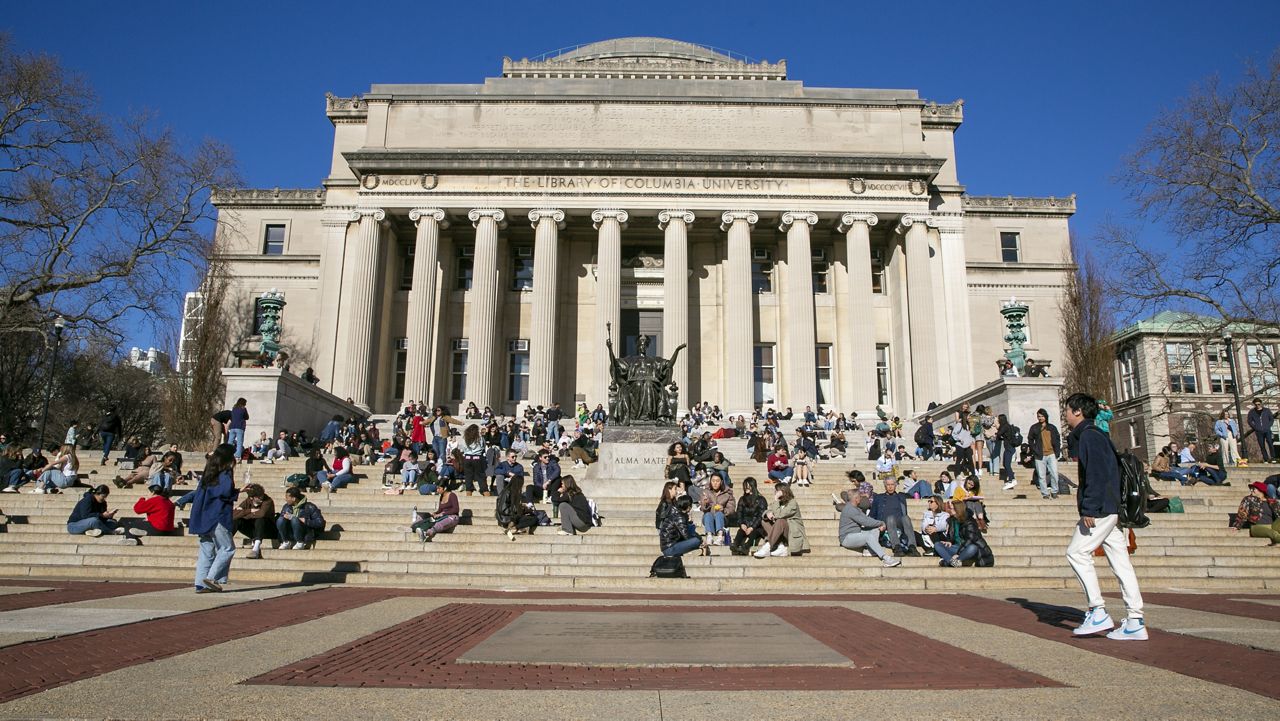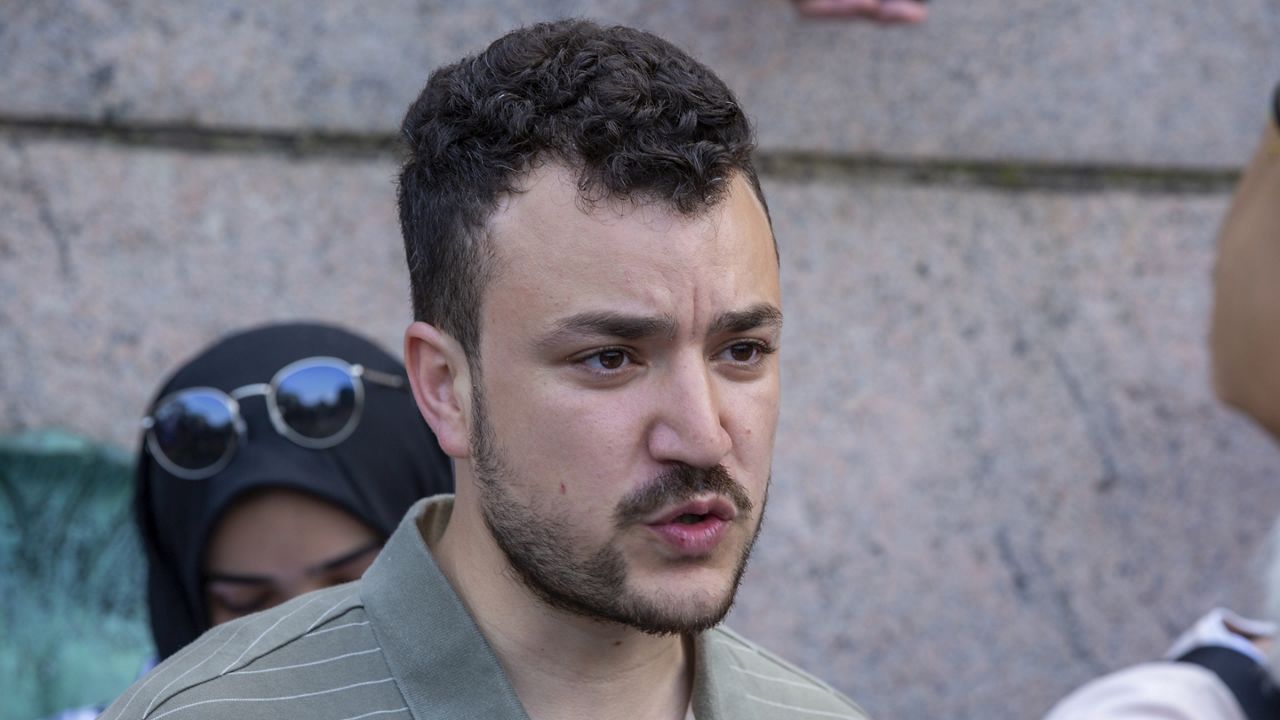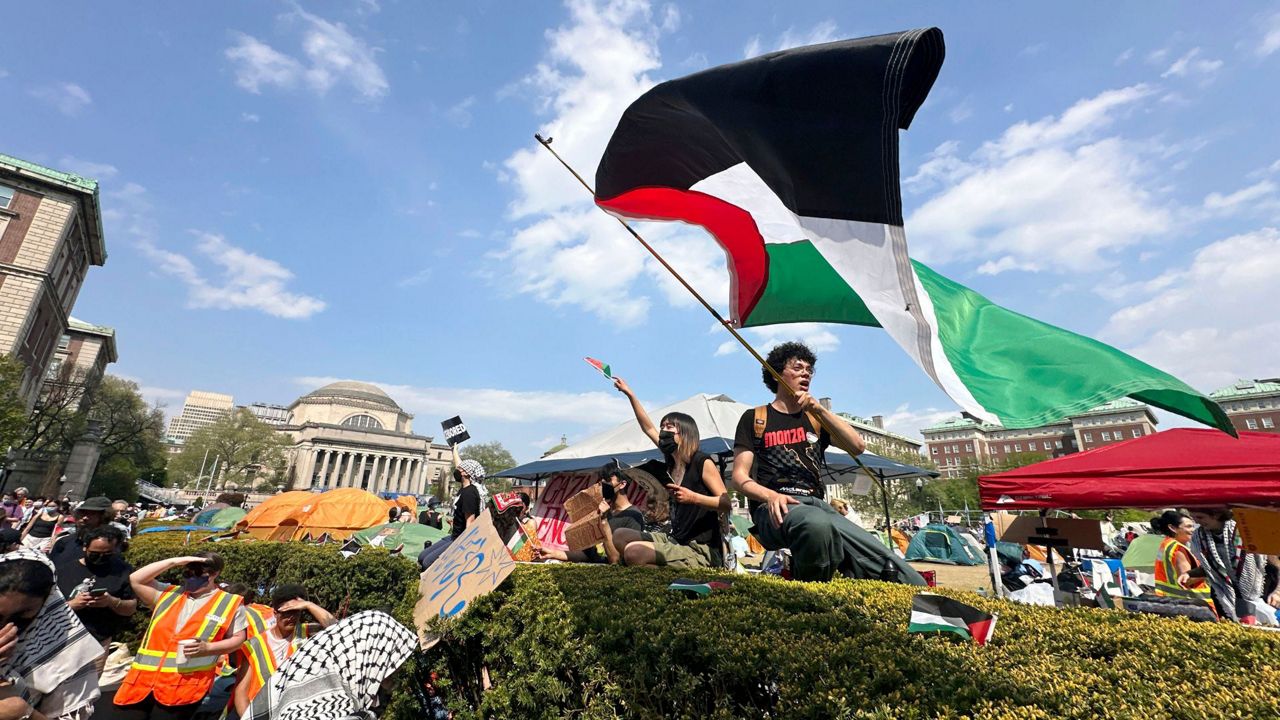Incoming schools chancellor Meisha Porter sat down -- via Zoom -- with NY1 education reporter Jillian Jorgensen to talk about re-opening, calls to better integrate public schools, and more.
Here’s the full Q&A, lightly edited and condensed for clarity:
JORGENSEN: The first thing I want to ask you about is high schools. I know opening high schools was obviously a big priority for you. It's the first thing that you're doing really coming into your role as Chancellor. And I know you have a child in high school. So talk to me a little bit about why opening high schools is so important to you.
PORTER: I think that opening at every level has been super important to me. Opening elementary school, opening high school, opening middle school. And so this is, this is the last kind of stop, opening high schools. The bottom line for me is that nothing replaces in person learning, and I've heard that from parents, I've heard that from students, I've heard it from teachers, nothing replaces that. And so many educators want to be back in school in person, so many students need the support of that in-person learning. And now that we know that we can do it safely. I'm really excited to be a part of the last step of opening our school system, and that's opening up high schools.
JORGENSEN: Last fall I spoke to a lot of blended high school students and they described an experience that was almost like being remote, but in the building -- where they would be in an auditorium or a cafeteria, doing their classes mainly on Zoom while their teacher might have been in another room in the same building, and that's largely because of the programming complications with high school. Not every kid in the same grade needs the same courses. You might only have a few chemistry teachers, and it's not like an English teacher can fill in. Is there a way, that you can foresee in the next three months, of making that experience better for some of those students?
PORTER: I think there are a lot of different kinds of blended models across the city. That also allows us to ensure that students actually have access to WiFi bandwidth and all of those things to really engage in the learning that they've been experiencing in the blended world. But I think the other thing that we've done is a lot of work with teachers, to train them on how to use Google Classroom, Peerspace, all of these varying tools to really get students connected, engaged remotely. My priority is that when students are in a building that they connect with an adult, at some point in their day, and that we're really addressing their social emotional experiences, as well as the academic experiences. And so that might be a counselor, that might be their direct one-to-one teacher, that might be a social worker. I think what is important is that they get in school and that they get connected, reconnected to the building and to learning.
JORGENSEN: I would imagine that you see sports playing some role in that as well. Students connecting with one another and with their coaches, right?
PORTER: Absolutely. I think that sports are a critical part of our reopening, and you know I think if my mailbox was flooded with anything over the last week -- nice congratulatory emails, but also parents, coaches, and students asking about sports. And so I was really excited to be a part of announcing bringing that back and really, you know, doing it and doing it safely.
JORGENSEN: Our viewers are obviously getting to know you, but you've been working in the DOE system for a long time. You are a graduate of New York City public schools -- so am I. Give me a sense of what you hope to bring from your experience to leading the system at such a challenging time.
PORTER: I think that one of the things that was really important to me was to be seen as a student. And I got to talk to young folks on the Chancellor’s Student Advisory Council, and that's not every student's experience. And if I can bring anything to the system, it is that for every single student in our system. We all come with our baggage, all of us came into this school system as students with whatever baggage, good, bad or indifferent -- but that the adults, and I know they've been really working hard to do this, but that every child is seen by the adults in the system. So that we can really take them to all of the amazing places that they can go. That happened for me, I can name five teachers that saw me and impacted my life in a different way, including principals. So I really want that to happen for the students across New York City.
JORGENSEN: On re-opening, give me a sense of what the planning for September looks like now. When do you expect to have a timeline, to have a clear plan that you'll be communicating to families?
PORTER: I want to jump into those conversations right away beginning next week. I officially start March 15th, and I want to begin those conversations, with our union partners, with our community partners, and most importantly without families and our students. I think that we have to really head into my tenure really focusing on opening. And there's been a lot of work done already to kind of get a sense of how people are feeling. Because I think that's where we start we start, with how people are feeling about it, and we build up trust, by having conversations, and we develop a plan that makes sense for everyone. And so I expect over the first two months, we will be really diving into that, planning for our September opening.
JORGENSEN: How do you foster that trust? Because one thing that I heard a lot from parents and from educators, was that they had felt a break in the trust between themselves and the Education Department, particularly around how things went last March. And we've also see 70% of families choose to learn remotely, with a disproportionate number of families of color making that decision. How do you convince them that it's safe to be back in schools and get them back into buildings?
PORTER: We have phenomenal systems and structures to engage parents, our ECC, our CECs, our parent organizations within video the DOE, and externally. I think what I've heard most from parents is, I'll quote one of my proud Bronx parents, Farah Despeignes, who said to me, ‘A survey is not a conversation.’ And that resonated with me. And what I heard when she said that to me six months ago was that parents want to be at the table for the conversation. The survey is important. We have a lot of really good information from surveys, but it can't be the only way that we're communicating and engaging with families around reopening.
JORGENSEN: One thing that really struck me about the whole reopening saga last summer was, I started asking how is the staffing on this going to work in July, when blended learning came out, and I started hearing from principals who were willing to go public and be on camera and talk about these concerns in August, which people aren't always comfortable doing unless they really feel seriously about something. It took until really late in the game before those concerns seem to have made it to the mayor in a way that he took a step back and delayed opening. I'm sure you may have had this experience too -- anybody who worked in a school building knew that certain things just weren't going to work the way that maybe they could work on paper. I'm curious what you think of that disconnect and how you avoid a situation like that, and the delays that came with it and the confusion for parents, going into this September.
PORTER: I think we learned a lot from last year. The first thing is we get out ahead of it. We are going to hit the ground running planning for September, making some very clear decisions early on, thinking about what worked and what didn't work. For me it is really about how we leverage our learning to kick off and start in a more productive way, but also recognizing what we know we struggled with last year. It was our first time in a pandemic, any of us, and so we didn't know what to expect. But we know what we wanted to do right: we wanted to open, we wanted to open safely. And so we had to make some decisions to push that back. Now we are in a much better place as a city, as a country, folks are getting vaccinated, the testing and safety protocols are in place. So we can really focus on opening for learning, because we figured that stuff out. And so I'm excited about jumping into that.
JORGENSEN: You're a longtime educator. I'm curious what your thoughts are on the impact of the last year on students, on the whole conversation around learning loss, what students have lost over the last year, and the system can measure that and try to recoup some of that lost time.
PORTER: There is the learning loss that everyone's talking about, but there’s also trauma, and so we can't just think about learning loss absent thinking about how we address social emotional learning, how we address trauma. Obviously we're going to assess where students are and use that information to inform our instructional practices, but we're also going to engage in assessing their social emotional well being, to also inform. We've done a lot of things already, schools have built-in wellness checks, adults are stepping in and providing support and connecting to students when needed. I also think is critically important how we're approaching learning, and in what ways students see themselves in their curriculum -- that our curriculum is culturally responsive, really centers our students and their experiences. In remote learning, our students can do better than any of us, they can mute us, they can mute themselves, they can cut off the camera, they can disconnect and disengage. And so in this moment it is critically important that students see themselves in their learning experiences, in their classroom, in their schools every day. And I think that that's going to be critical for us as a system.
JORGENSEN: I want to ask you about some kind of current events news of the day, which is a lawsuit filed by integrate NYC. Do you think that the DOE’s system of screens, specialized schools and separately tracked gifted and talented classes has exacerbated racial inequality in the city?
PORTER: I’ll say simply that I don't believe that any one single test should be a measure for how we put students in programs, how they engage in our school, in our school system. I think that this administration has made some critical progress on admissions policies, pausing academic screens and middle schools, removing district priorities in high schools, beginning to reimagine G&T, which is going to be a bulk of my work, and our district the diversity plans. Clearly there's more work to be done. And I've made clear over and over that it's something I plan to do. Student voice is essential to that plan. I look forward to engaging with students across the city. I look forward to engaging with parents and communities across the city. Because, similar to the question you asked me about getting folks back, this question is grounded in people feeling connected, engaged and communicated with. We asked for student voice. And so we're going to take it.
JORGENSEN: As you head into the G&T reimagining over the summer, I think there's been pretty broad agreement that the test is probably not the best way to do anything, particularly at that age. But there's been less cohesion around the idea of whether or not it makes sense to separate out gifted and talented students, to track them, to use the wonky word for it. What's what's your take on that?
PORTER: At first, I'll say more to come. But the brief thing I'll say is that there are so many gifted students across our city. And we have to create spaces for all of them. I think that there hasn't been a space to acknowledge all of the talents and gifts that our students have across the city, and I think that's what we need to do. But more to come as I dig into this.
JORGENSEN: Do you think there should be another opt-in for in-person instruction this year? We've got three months left, which is either a long time or a short time, depending on how you think about it.
PORTER: Well, the mayor said it's something we should do, my students on the Chancellor’s Student Advisory Council said that, my email is flooded with that as well. So I think we will get there. I think we just have to, you know, let us open. Let us assess our current situation. And then we will look at creating more opportunities for students to opt in.
JORGENSEN: I'm going to guess that this is another thing that might be flooding your inbox right now -- the two-case rule. It certainly floods my inbox and my Twitter mentions, from parents who are frustrated that schools close down when there are two unrelated cases in the building that can't be linked. I know the mayor has said he's exploring changing that. Where do those conversations stand at this point?
PORTER: You are definitely all in my inbox and my Twitter. The mayor said it, we are looking at it. We've done some really great work, and our schools are the safest places. And so we're looking at the two case rule. Let us get in, let us get our high school students in, and then more to come on that as well.
JORGENSEN: You’re the first Black woman to take on this job, and you may have a limited amount of time -- we never know what the next mayor will do, or who the next mayor will be. What do you really hope that you can bring to this, and what do you really hope to get done in the next nine months. And who knows, maybe beyond, but in the time that you know that you have.
PORTER: I’m really focused on these next nine months. And what I've said to everybody, my focus is open, open, open. Open high schools, we're on our way there. Open and engaging and enriching summer school opportunities for our students. And open our schools in September. In new and innovative ways, leveraging the practices that we've learned to promote learning, but also like I said really centering our students, and really allowing them to see themselves in the curriculum. So that is my focus and there's a lot to do to get that done
JORGENSEN: Anything else you want people to know?
PORTER: I want to thank everyone for all of the support. I think what people should know about me is, I'm looking forward to working collaboratively to open our system up and bring our schools to the places that they need to be as we head into 2021. There are a lot of folks interested -- community members, families, parents, community-based organizations, nonprofit partners. There's so many people interested in being a part of this work, and I'm really interested in partnering around it.
JORGENSEN: I've heard from some parents who are skeptical about idea that schools will be fully open in September. Nothing is certain in this world, as we've learned in the last year. Is it your vision that any student who wants to be in school five days a week in September will be in school in person five days a week?
PORTER: Twitter got at me on that one this morning, too. My focus, my priority, my goal is to get every student who wants to be in school five days a week in school. But I will also be honest and say, we have to make sure -- and we're heading straight in that direction -- but we have to keep health and safety first, and make sure that we prepared students. But that is what I intend to do.
EDUCATION
Incoming Schools Chancellor Meisha Porter On Reopening, Gifted and Talented, and More
PUBLISHED 9:53 AM EST Mar. 10, 2021







_CGPK_Mn_Columbia_Students_Chained_CG)

